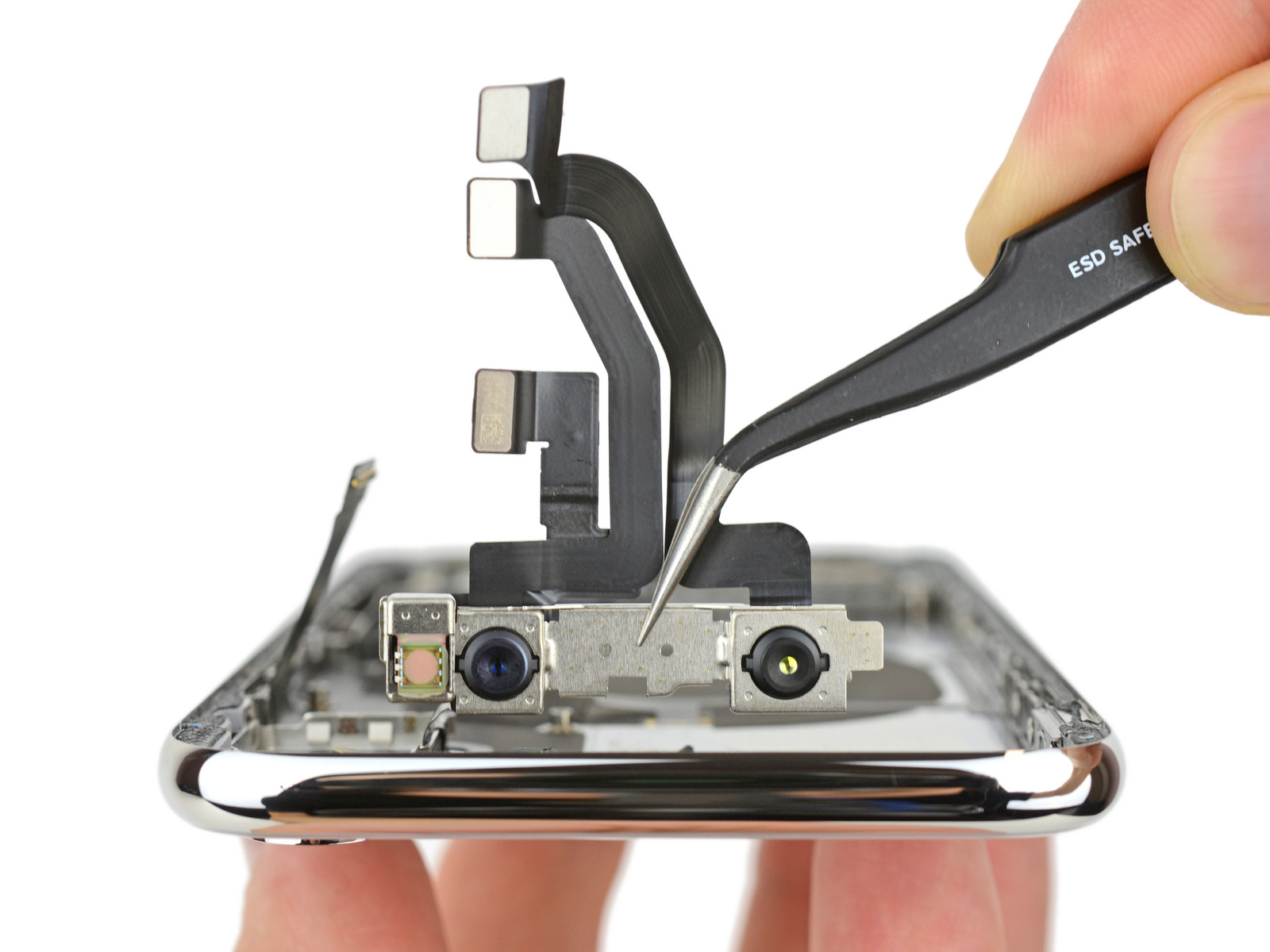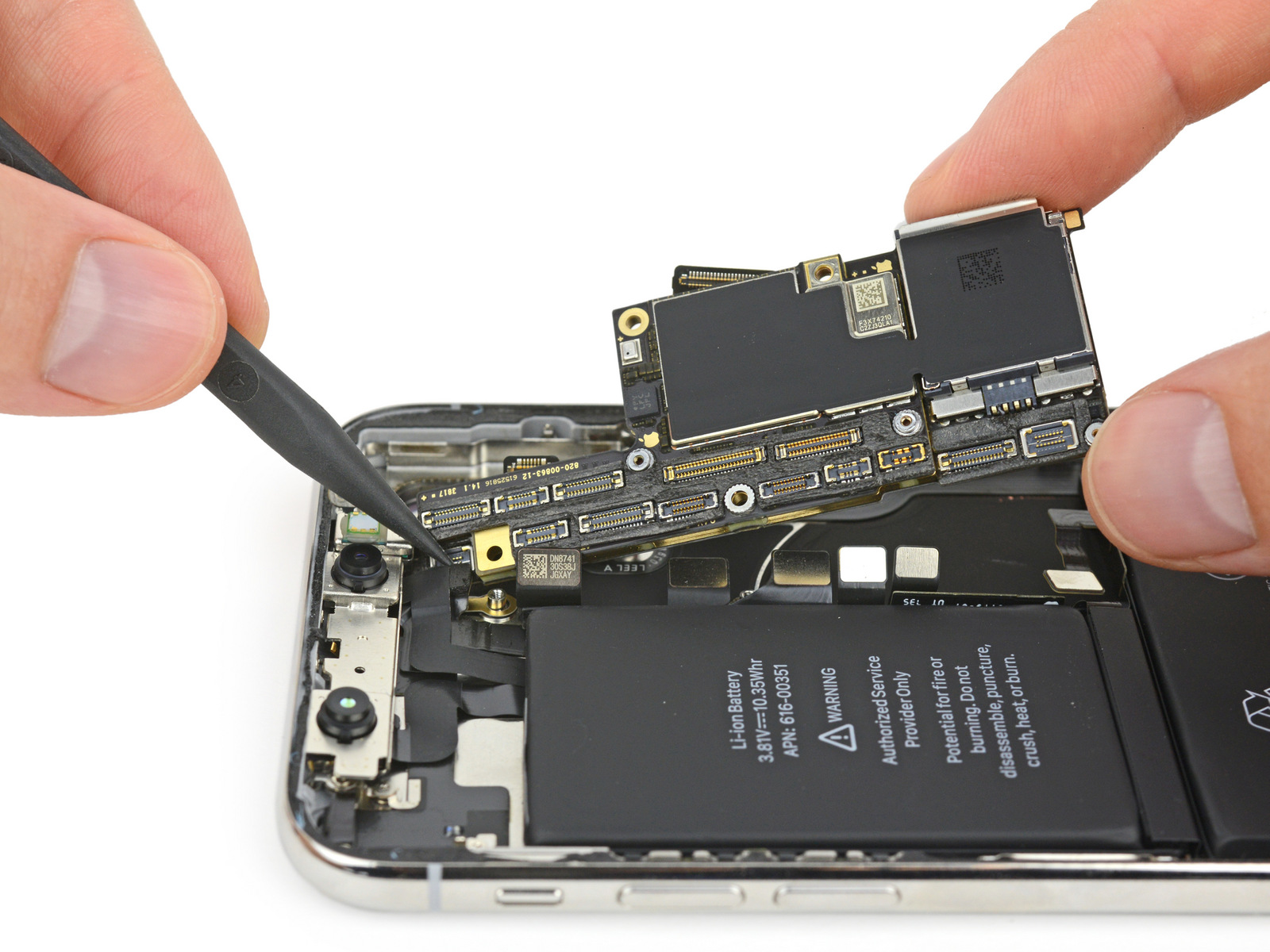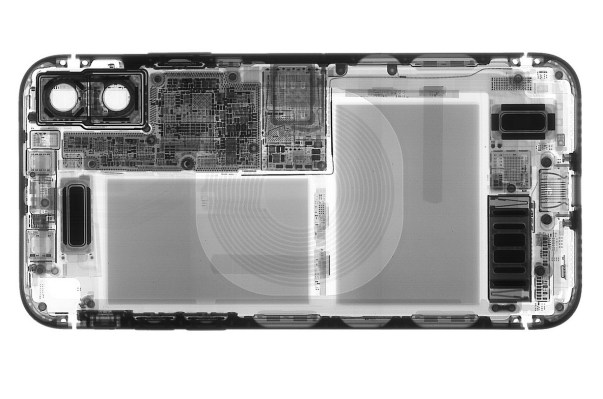The iPhone 8 may have been filled with the expected kit, but we’ve all been looking forward to finding out what fun Apple’s engineers had putting together the all-new iPhone X — and it doesn’t disappoint. iFixit’s excellent-as-always teardown finds a wealth of strange new components inside the biggest redesign of the device in years.
Right off the bat there’s an interesting and first-time choice to split the battery into two parts — it’s mainly just to better use the space that’s left over after budgeting for the volume of the other parts. It still comes out as a single piece, just a little more L-shaped than the usual rectangle.
Users will be glad to hear that the Lightning port has been reinforced; it’s given a little more space and structure inside the body of the phone, which should prevent it from wearing out so quickly.
 The front-facing camera array, essentially a miniaturized first-generation Kinect, doesn’t have many surprises, but it’s nice to see that it comes out relatively easily and in one piece.
The front-facing camera array, essentially a miniaturized first-generation Kinect, doesn’t have many surprises, but it’s nice to see that it comes out relatively easily and in one piece.
It’s the logic board that really impresses, though. When taken out of its little spot, it looks like it’s actually smaller than the iPhone 8’s. How could that be, if it has even more capabilities? Turns out this particular logic board is double-sided.
 Putting a few pieces on the back of a board is nothing new, but this takes it to a different level. It’s really two very thin and very densely packed logic boards, connected with a spacer PCB and with little tunnels through which data can travel.
Putting a few pieces on the back of a board is nothing new, but this takes it to a different level. It’s really two very thin and very densely packed logic boards, connected with a spacer PCB and with little tunnels through which data can travel.
By doing this, the logic board in the iPhone X manages to take up 30 percent less space, while fitting in 35 percent more components. It’s an admirable feat of miniaturization — but the flip side, so to speak, is that it puts a great deal of electronic eggs in one basket. If something goes wrong with one bit, you’ll have to replace what’s likely the most complex mobile logic board ever made.
The good news is that the most common failure of iPhones — a cracked screen — is relatively straightforward to fix. That notch holding the Face ID hardware is separate from the screen, so you can replace the glass without replacing the baby Kinect. The battery is likewise relatively easy to replace. Take care of the back panel, though: if it shatters, you’ll pretty much be stuck with it unless you really want to shell out.
